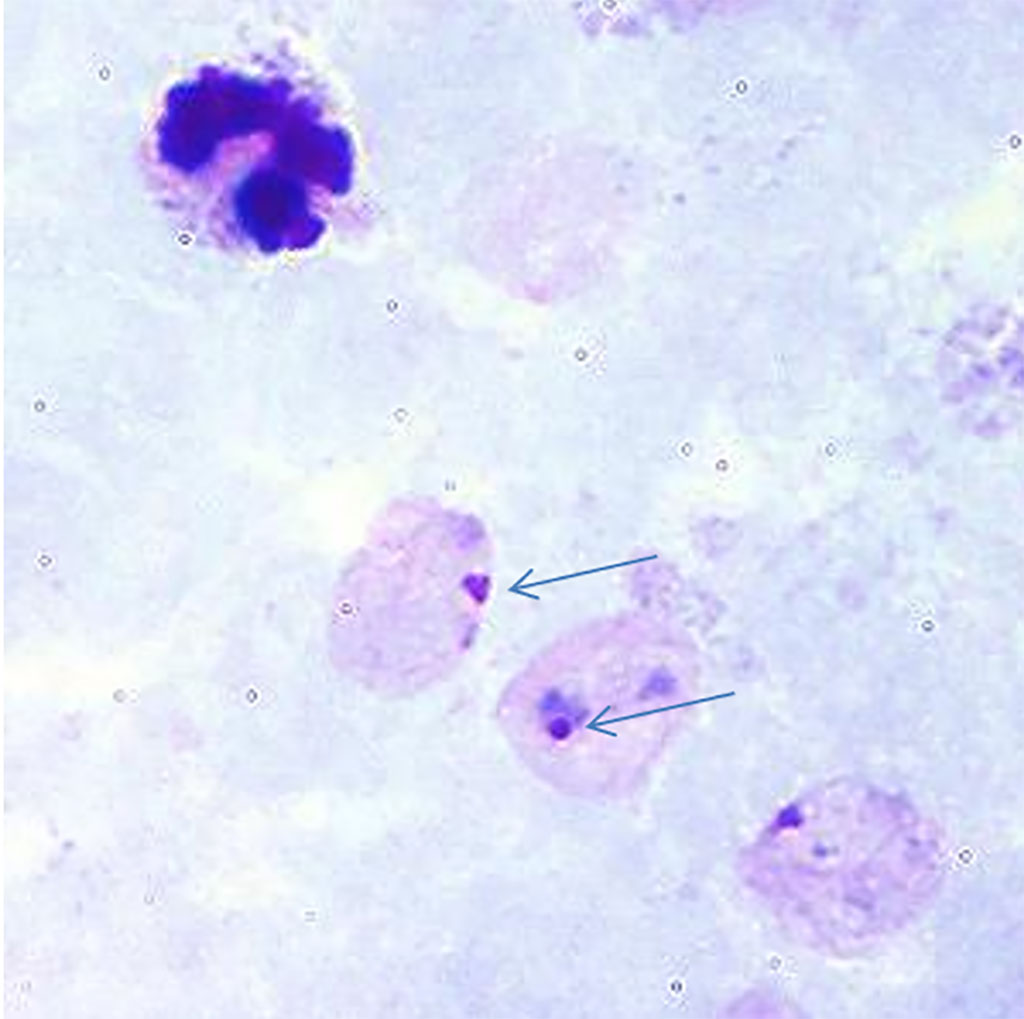Magneto-Optical Diagnosis Evaluated for Symptomatic Malaria
By LabMedica International staff writers
Posted on 02 Mar 2021
Malaria places a significant social and economic burden on many tropical developing countries, further undermining the potential for growth. Development of rapid, easy-to-use and low-cost malaria diagnostic methods, with high sensitivity and specificity, remains an urgent priority for tropical diseases.Posted on 02 Mar 2021
Currently available methods to diagnose malaria include the inspection of blood smears using light microscopy (LM), rapid diagnostic tests (RDTs), and molecular methods, such as polymerase chain reaction (PCR) or other molecular techniques. A novel method, named rotating-crystal magneto-optical detection has been evaluated.

Image: Malaria: Thick bloods smear showing ring-form trophozoites of Plasmodium vivax that are difficult to detect. Two ring-forms are arrowed (Photo courtesy of US Centers of Diseases Control and Prevention).
An international team of scientists led by those at the James Cook University (Smithfield, Australia) developed and tested the method called rotating-crystal magneto-optical detection (RMOD) on nearly 1,000 suspected malaria patients in a high-transmission area of Papua New Guinea. The novel method was compared with LM, using thick blood smears for parasite density quantification and real time PCR that employed a two-step protocol using a using a CFX96 Touch qPCR system (Bio-Rad Laboratories Pty., Ltd., Gladesville, Australia).
The team reported that compared to light microscopy, RMOD exhibits 82% sensitivity and 84% specificity to detect any malaria infection and 87% sensitivity and 88% specificity to detect Plasmodium vivax. This indicates that RMOD could be useful in P. vivax dominated elimination settings. Parasite density correlates well with the quantitative magneto-optical signal. Importantly, residual hemozoin present in malaria-negative patients is also detectable by RMOD, indicating its ability to detect previous infections.
Stephan Karl, PhD, a Senior Research Fellow and a corresponding author of the study, said, “Malaria is easily treated but it is actually hard to diagnose, and because of that there can be over-treatment, which we have seen can lead to the spread of drug-resistant malaria. Malaria parasites break down blood in such a way that heme molecules in the blood assemble themselves into organic crystallites containing magnetic iron, which is detected by the RMOD method.”
The authors concluded that they had carried out an extensive assessment of a promising novel method to diagnose malaria rapidly and at low cost in a high transmission setting and a population of symptomatic, suspected malaria cases in Papua New Guinea. The present study shows that in such a setting, the RMOD performs well in comparison to expert LM-based diagnosis, the most reliable reference method in their study. The study was published on February 12, 2021 in the journal Nature Communications.
Related Links:
James Cook University
Bio-Rad Laboratories














